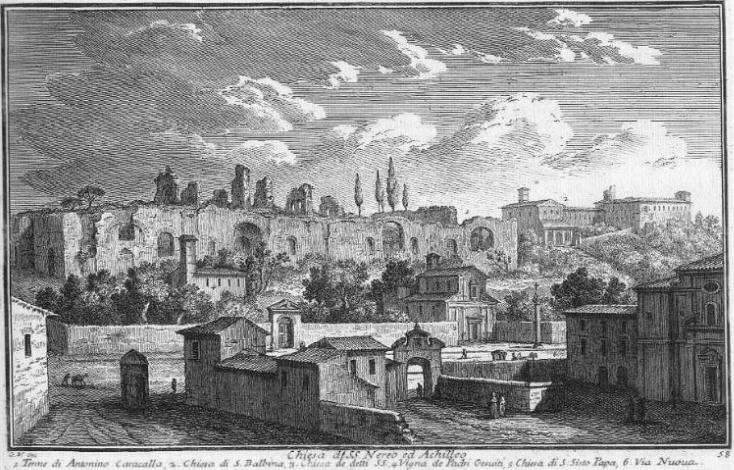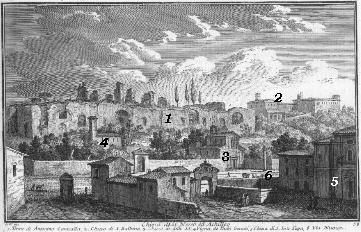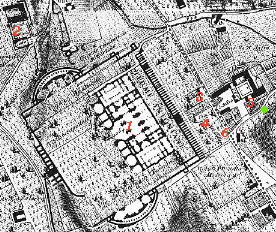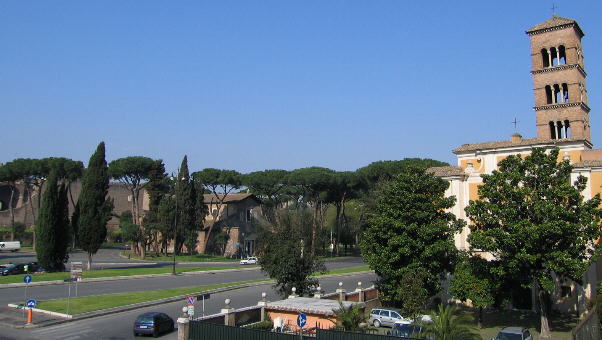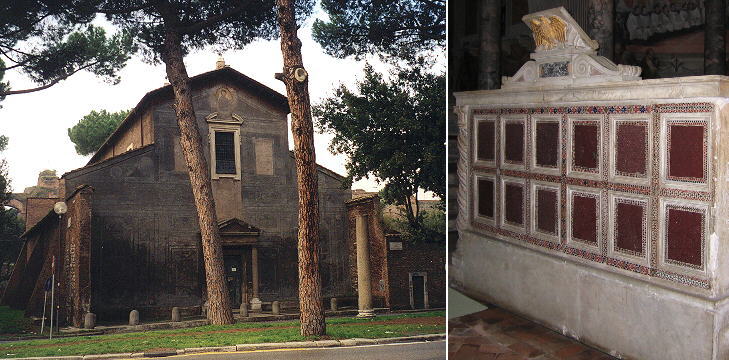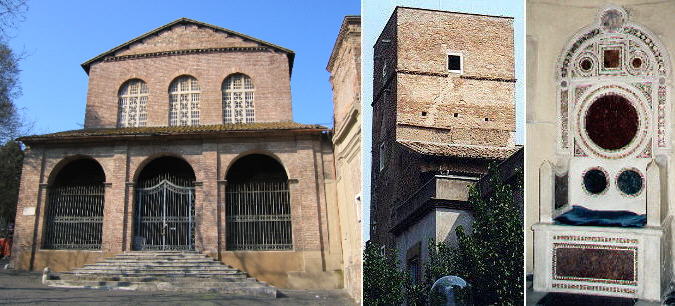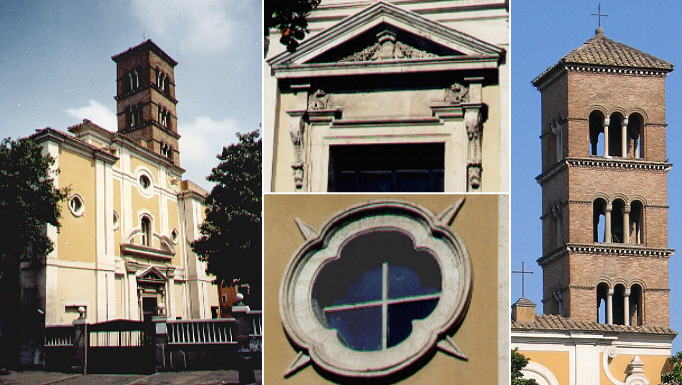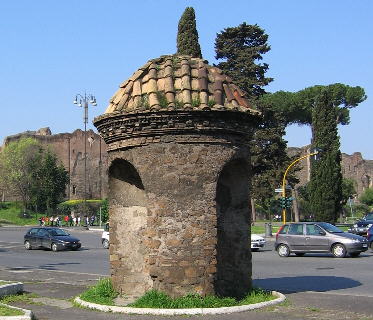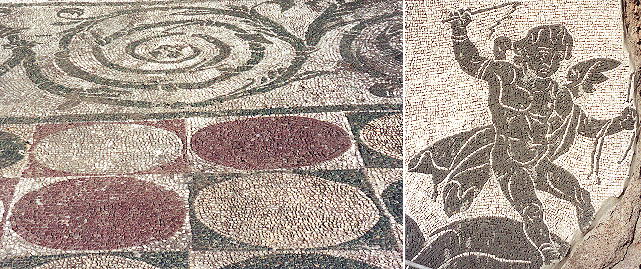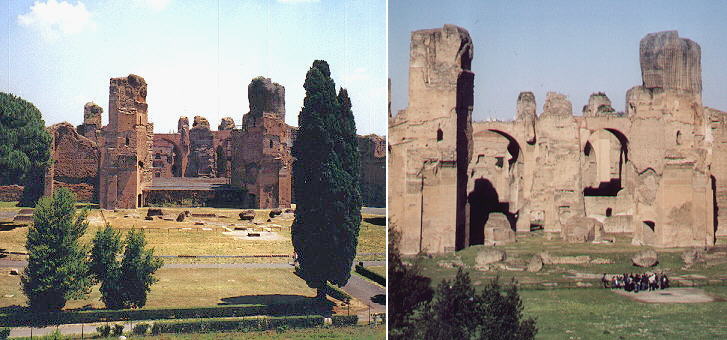  SS. Nereo e Achilleo (Book 3) (Map B4) (Day 5) (View C10) (Rione Ripa) and (Rione Campitelli) In this page:
The very old church of SS. Nereo and Achilleo offers Vasi the chance to show us
the northern slopes of the little Aventine with a view over Caracalla's
Baths and S. Balbina. Today this peak of the Aventine is more commonly
known as S. Saba (you may wish to have a
stroll in S. Saba). The view is taken from the green dot in the small 1748 map here below.
In the description below the plate Vasi made reference to: 1) Caracalla's Baths;
2) S. Balbina;
3) SS. Nereo e Achilleo;
4) Vigna de' Padri Gesuiti (a cultivated piece of land belonging to the Jesuits);
5) S. Sisto Vecchio;
6) Via Nuova (this name was actually given to the parallel street flanking Caracalla's Baths).
The dotted line in the small map delineates the border between Rione Ripa (left) and Rione Campitelli (right).
The area is now planted with pines and cypresses which limit the view over Caracalla's Baths and S. Balbina. To the right the church of S. Sisto Vecchio with an XVIIIth century façade and a much older bell tower.
The church mentioned already in 337, was rebuilt around the year 800 and was widely restored in 1597 (have a look at its interior). The façade still shows some painting.
Up on the slopes of the Aventine another monastery/fortress in addition to S. Sabina and S. Saba. A medieval tower commanded a view over anybody approaching the monastery. The church (largely restored in the 1930s) has a very fine episcopal chair with a Cosmatesque decoration.
The church was called Vecchio (old) in the XVIth century when the Dominican nuns moved out of it (the area was often flooded) to the new monastery of SS. Domenico e Sisto. The church and the monastery were again used in the XVIIIth century. The new façade is an early work by Filippo Raguzzini, who maintained the original entrance by Giacomo Della Porta which shows the dragons of Gregorius XIII.
This little medieval monument (which is shown in the left side of the plate) was most likely built on a previous Roman signpost marking the split of the street between the branch going to Porta Latina and the branch going to Porta S. Sebastiano (Via Appia).
The Baths were opened in 217 and were used until the VIth century when the aqueducts were destroyed. They were mainly a social meeting point during the late Empire, with shops on the ground level along Via Nova a new street parallel to Via Appia . The ruins are impressive and retain still some interesting mosaics, while the gigantic statues found here at the time of Paulus III are in Naples.
Until the end of the 1980s, a Summer Opera Season was held between the two remaining pillars which supported the Calidarium. Aida by Giuseppe Verdi especially profited from this setting. In 2003 the Summer Opera Season was again set at Caracalla's Baths, but at a certain distance from the pillars. You are invited to come to An Evening at Caracalla.
Read William Dean Howells' account of his visit to Caracalla's Baths in 1908. Excerpts from Giuseppe Vasi 1761 Itinerary related to this page:
Next plate in Book 3: Chiesa di S. Cesario Next step in Day 5 itinerary: Chiesa di S. Cesario Next step in your tour of Rione Ripa: Chiesa di S. Cesario Next step in your tour of Rione Campitelli: Villa Mattei
Go
to |
